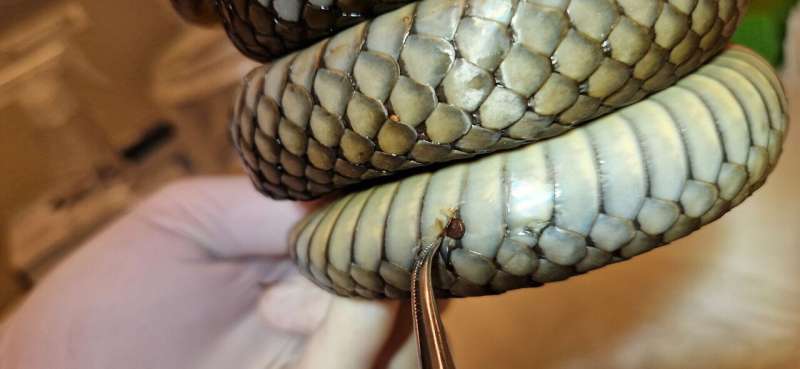In a fascinating journey through time and science, researchers are diving deep into the archives of snake specimens to uncover the mysteries of a deadly fungus threatening these intriguing reptiles. Their heartwarming mission aims to protect snake populations by understanding the impact of this disease, sparking curiosity and hope for a brighter future.

A team of dedicated researchers from the University of Agder and Uppsala University is carefully examining hundreds of snake specimens collected over the years. Their goal? To learn about a serious fungal disease named Ophidiomyces ophidiicola, which poses a significant threat to these fascinating reptiles.
“We want to map the disease to understand how it spreads and affects our snake population,” shares Beate Strøm Johansen, a zoologist at the UiA Natural History Museum and Botanical Garden. By studying snake collections housed in museums, the researchers can trace the history of this fungus and see how far it might have traveled.
First identified in the United States in 2006, the fungus came as a surprise to researchers when it appeared in the U.K. just over a decade later in 2017. It begins by causing dry, brown spots on the skin and scales of snakes, eventually leading to severe respiratory issues and blindness. For some species, this could mean devastating population declines if not addressed promptly.
“Understanding the extent of this disease is crucial,” emphasizes Johansen. “It could have far-reaching consequences for snakes around the globe.”
Malene Ø. Nygård, a conservator at the UiA’s Natural History Museum, has been hard at work isolating DNA from over 300 snakes, covering all species present in Norway, from smooth snakes to various vipers. The excitement is palpable as Nygård discusses the potential insights that their research on both living and historical specimens might unveil: “This knowledge could play a vital role in protecting snake populations in the future.”
This important project is a collaborative effort with support from the Uppsala University and the Swedish University of Agricultural Sciences. So far, around 120 snakes have been investigated at various museums, including the Museum of Evolution in Uppsala and the Natural History Museum in Oslo. Plans are in place to explore further specimens in Stockholm and Trondheim as well.
Packed in jars, the preserved snakes await examination. “We start by carefully inspecting through the glass for any signs of infection. With permission, we then access the samples, using scalpels and cotton swabs to gather tissue for analysis,” describes Johansen. Some of these specimens date back hundreds of years, offering a unique glimpse into the timeline of the fungus and its effects.
“Mapping these historical snakes will help identify which species and areas may be most susceptible to the fungus,” Johansen adds. While this particular fungus doesn’t infect humans directly, it can be unintentionally spread through contaminated soil, equipment, or even through the escape of infected pet snakes.
The origin of the fungus remains a mystery—it is thought to inhabit the upper soil layers naturally, but researchers are unsure about its specific targets. “There are a couple of other fungi that look similar, which can complicate identification, making it even more important to accurately pinpoint this dangerous species,” Johansen explains.
As the research unfolds, the hope is that a deeper understanding can pave the way for protecting snake species globally. Each step taken by these passionate scientists is a step closer to safeguarding a vital part of our natural ecosystem.
If you would like to see similar science posts like this, click here & share this article with your friends!


